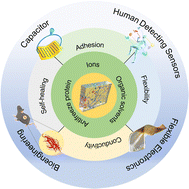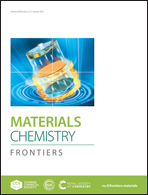Anti-freezing multifunctional conductive hydrogels: from structure design to flexible electronic devices
Abstract
The remarkable flexibility, versatility, and biocompatibility of hydrogel-based flexible materials have attracted extensive research interest. However, conventional hydrogels face inherent challenges when it comes to long-term usage under complex environmental conditions. Specifically, water evaporation or freezing within hydrogels can lead to elastic failure and decreased electrical conductivity at elevated or freezing temperatures. These limitations severely restrict the potential applications of hydrogel-based flexible electronics. To address this issue, considerable attention has been directed towards developing anti-freezing hydrogels. In this review, we systematically discuss the construction strategies, properties, and applications of anti-freezing conductive hydrogels. The construction strategies encompass various approaches, such as the introduction of ions (inorganic salts, organic bases, amphoteric ions), organic solvents (polyols, dimethyl sulfoxide), ionic liquids, among others. In the properties section, we delve into the mechanisms and explore the key attributes of anti-freezing hydrogels, including self-healing, adhesion, flexibility, and electrical conductivity. Furthermore, we outline the applications of these hydrogels in capacitors, sensors, and flexible batteries. Finally, we present the current challenges and outline future research directions. The objective of this review is to provide guidance for the design of anti-freezing hydrogels that meet both performance requirements and practical application demands. By considering these factors, we aim to facilitate the development of hydrogels that can withstand diverse environmental conditions and unlock their full potential in various fields.

- This article is part of the themed collections: 2023 Materials Chemistry Frontiers Review-type Articles and 2023 Materials Chemistry Frontiers HOT articles


 Please wait while we load your content...
Please wait while we load your content...